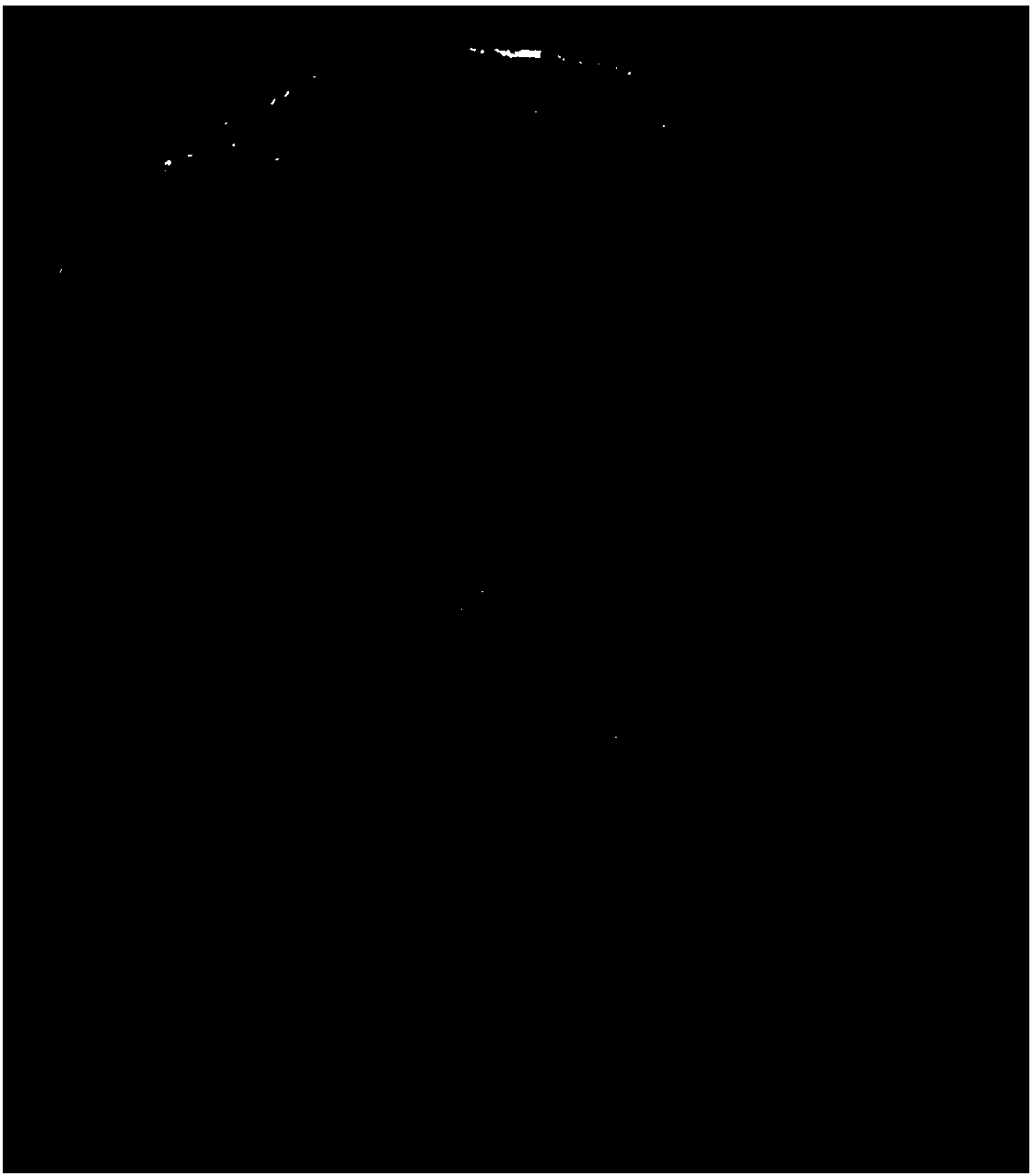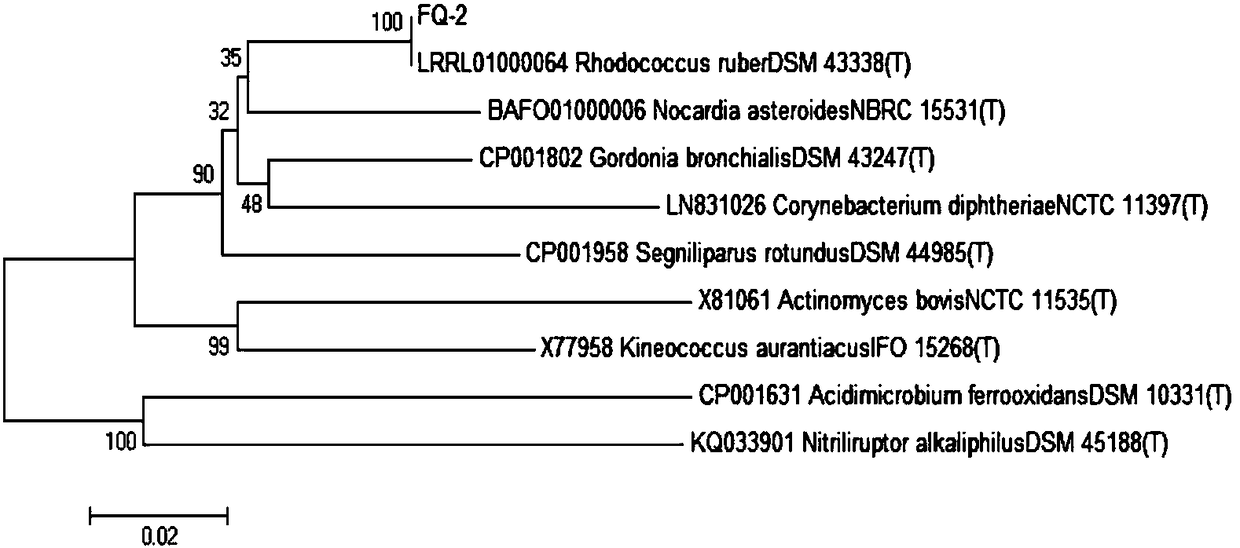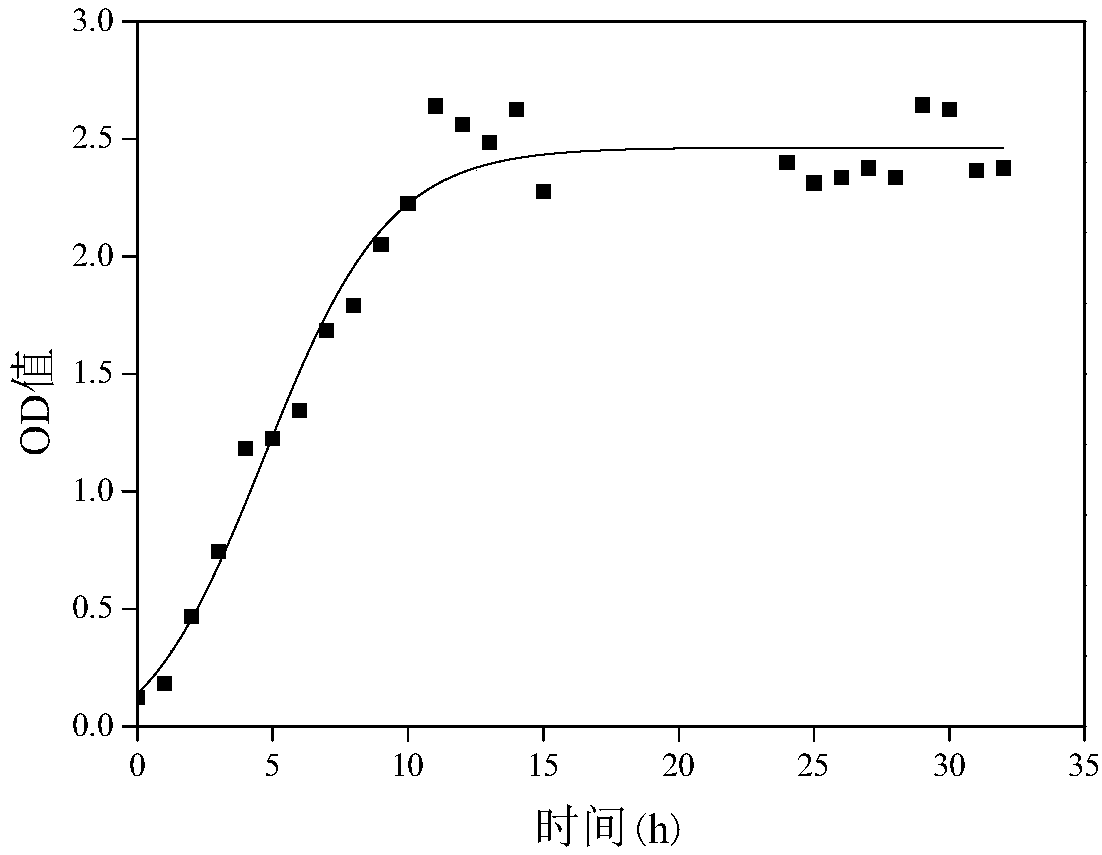Rhodococcus ruber and application thereof in degradation of organic pollutants
A technology of organic pollutants and Rhodococcus rubrum, applied in the field of biodegradation of organic compounds, can solve problems such as high condition requirements and secondary pollution, and achieve the effect of broad application prospects
- Summary
- Abstract
- Description
- Claims
- Application Information
AI Technical Summary
Problems solved by technology
Method used
Image
Examples
Embodiment 1
[0022] Embodiment 1: Isolation, purification and identification of bacterial strains
[0023] 1. Isolation and purification of Rhodococcus ruber FQ-2.
[0024] Rhodococcus ruber (Rhodococcus ruber) FQ-2 is a fungus domesticated and isolated from the activated sludge in the aeration tank of a pharmaceutical factory in Zhejiang Province. Specific steps are as follows:
[0025] The activated sludge in the aeration tank of a pharmaceutical factory in Zhejiang Province was taken. After washing with tap water for five times, air-expose for 48 hours to remove residual organic matter as much as possible. Prepare the initial inorganic salt culture medium, inoculate the activated sludge, and use acetone with an initial concentration of 50 mg / L as the sole carbon source for directional domestication of the activated sludge. Replace the fresh inorganic salt culture medium every 3 days, and the separation can take about 40 days.
[0026] Initial inorganic salt medium composition: KH 2 ...
Embodiment 2
[0043] Example 2: Growth curve of Rhodococcus erythrococcus FQ-2.
[0044] After inoculating Rhodococcus erythrococcus FQ-2 into LB liquid medium, carry out shaking culture in a constant temperature shaker (30°C, 160r / min), and measure the OD of the bacterial solution every hour 600 , and draw the growth curve of the strain. LB liquid medium composition: peptone 10g / L, yeast extract 5g / L, NaCl 10g / L, solvent is deionized water, pH=7, sterilized at 121°C for 20min by high-pressure steam.
[0045] The growth curve of the bacteria measured by the experiment is as follows: image 3 shown. Rhodococcus Erythrococcus FQ-2 can continue to grow in LB medium and reach a stable period in about 12 hours, but after continuing to observe, it is found that it is still in a stable period after 24 hours. Generally, the stable period of bacterial growth is 8-12 hours. It is speculated that LB medium is used During the determination of the growth curve of the strain, the dead bacteria did not...
Embodiment 3
[0046] Example 3: Degradation of acetone by Rhodococcus rubella FQ-2.
[0047] Inoculate the Rhodococcus erythrococcus FQ-2 stored on the LB solid medium into the LB liquid medium, carry out shaking culture in a constant temperature shaker (30°C, 160r / min) for 12h (OD=0.7), and centrifuge at 8000rpm for 10 minutes , the obtained cells were inoculated into inorganic salt medium (initial OD 600 0.20), add 3 μL of acetone (concentration: 50 mg / L), carry out shaking culture in a constant temperature shaker (30°C, 160r / min), and measure the acetone concentration by gas chromatography at regular intervals. The experiment set up two parallel groups and a blank group (no bacterial solution).
[0048] LB liquid medium composition: peptone 10g / L, yeast extract 5g / L, NaCl 10g / L, solvent is deionized water, pH=7, sterilized at 121°C for 20min by high-pressure steam.
[0049] Composition of trace element mother liquor: CuSO 4 ·5H 2 O 0.02g·L -1 , FeSO 4 ·7H 2 O1.0g·L -1 , MnSO 4 4...
PUM
| Property | Measurement | Unit |
|---|---|---|
| concentration | aaaaa | aaaaa |
Abstract
Description
Claims
Application Information
 Login to View More
Login to View More - R&D
- Intellectual Property
- Life Sciences
- Materials
- Tech Scout
- Unparalleled Data Quality
- Higher Quality Content
- 60% Fewer Hallucinations
Browse by: Latest US Patents, China's latest patents, Technical Efficacy Thesaurus, Application Domain, Technology Topic, Popular Technical Reports.
© 2025 PatSnap. All rights reserved.Legal|Privacy policy|Modern Slavery Act Transparency Statement|Sitemap|About US| Contact US: help@patsnap.com



